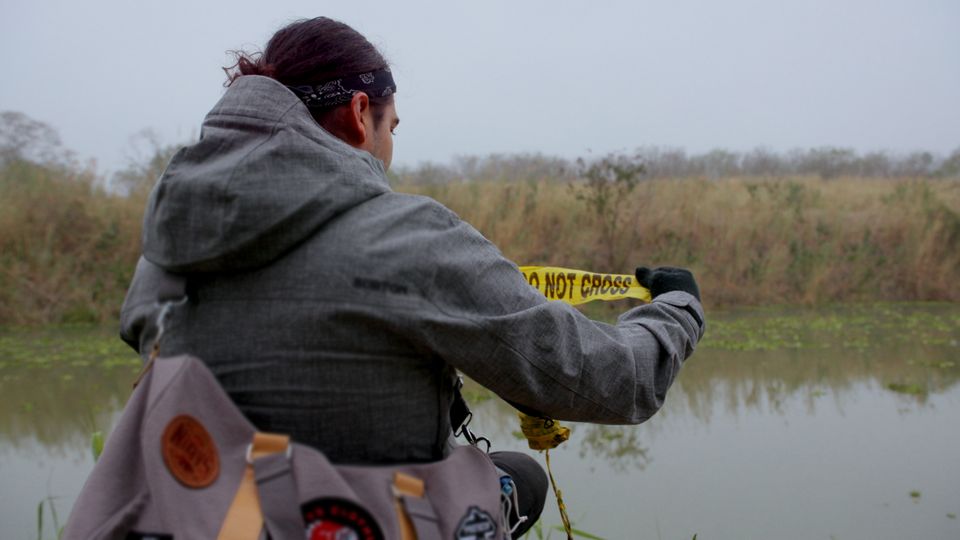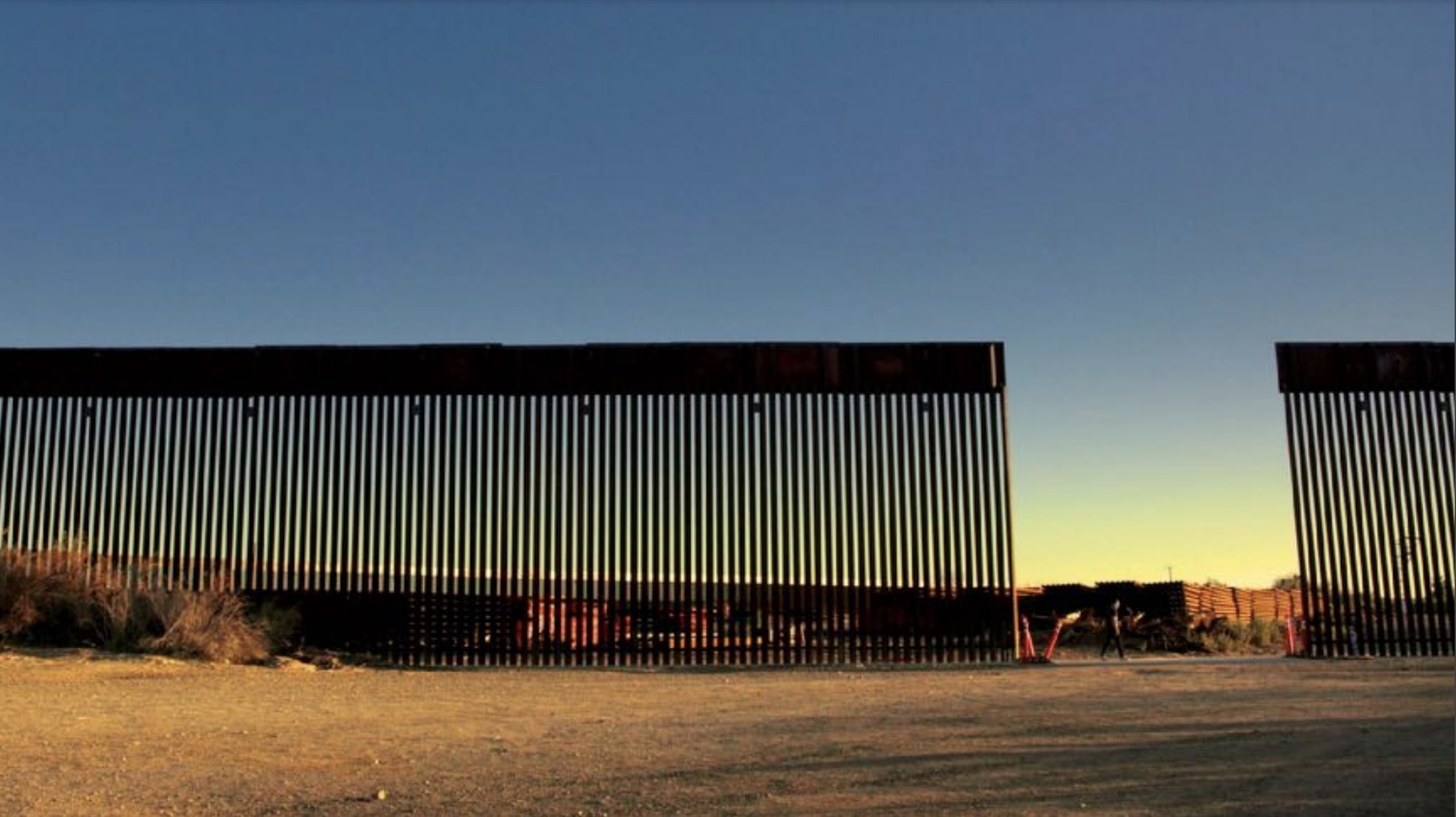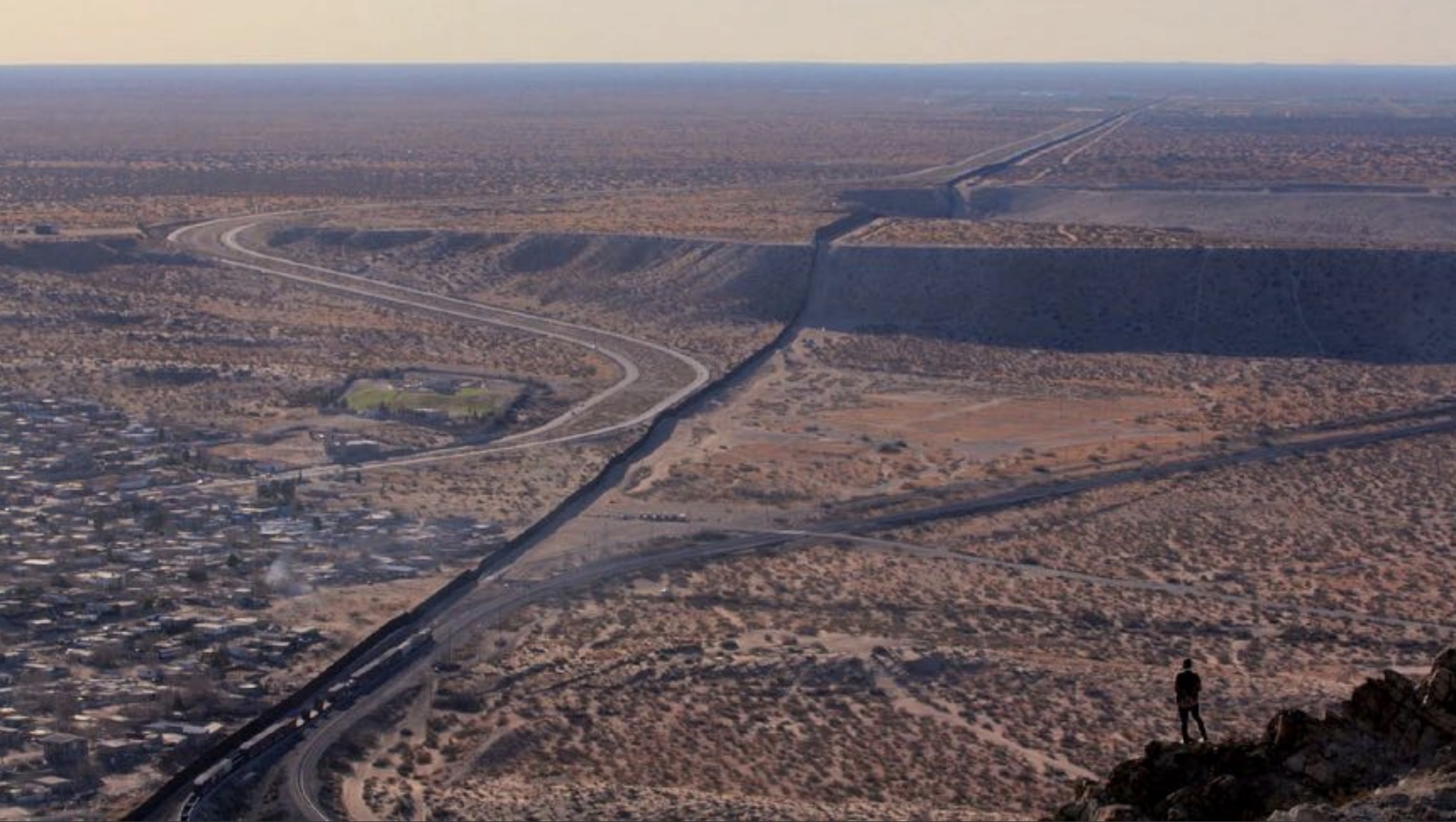
No Soy Óscar is an ode to Latinx children, immigrants and the worst fears that can live within a dream. In 2019, Óscar Alberto Martínez Ramírez and his young daughter Angie Valeria died while crossing the Rio Grande, trying to get to the US. The image of their bodies made national headlines and haunted those who felt the pang of familiarity in their struggle. No Soy Óscar, follows a father as he writes a letter to his daughter and identity as he travels to that same location. Cathartic and emotional, the short is especially poignant when put against the stark, desert scenery and stillness.
We chatted with director Jon Ayon on creating No Soy Óscar and processing the emotions that came with the project.
*This interview has been edited for length and clarity
Q: Could you tell me a little bit more about what inspired you to create this shore and what the process was like for you?
JA: Unfortunately, what inspired me to make this short was the deaths of Óscar Alberto and Angie Valeria. It was born out of a lingering thought. When he and Angie were found, I had just become a new father. So it kind of hit me in a weird spot. Being half Salvadoran myself, I was struck by the idea that one of us has to die to try to survive. The other one, you know, has insurance and gets to exist in it in a different kind of reality. I never really thought about it as a film, but, you know, as I watched my daughter grow, I kept thinking about Oscar. I kept thinking about how he lost the chance to see his daughter grow. So when it came time to think about a film to make, I just couldn’t get that idea out of my head. How do I show people what that feels like, you know, to be somebody who exists, knowing that so many other people have died, trying to exist in the same and just just in a similar way. That’s where the inspiration came from. The process of making the film, I made a decision early on that if I was going to make a film that talks about something as disturbing as this death, that I wouldn’t show the photograph ever, and that I wouldn’t just make it solely about Oscar and Angie, but make it a more macro perspective. And that I would never interview anybody who was not either Indigenous or an immigrant. I just didn’t care to hear another person’s opinion. I didn’t want to interview politicians or border patrol people, I think those films have already been made. I was strictly trying to capture what it felt like to be someone like me, navigating grief and memory and trauma, and also immigration. Trying to understand why we are doing this, this way.
Q: Why do you think now was the right time to actually create it (the short)?
JA: I think we have a very, very disturbing memory loss when it comes to things like Oscar. I think this photo was national news. We have this 24 hour news cycle and 36 second clickbait headlines. I think that I felt like the people were forgetting him. I felt like people were forgetting the migrants that are at refugee camps. I don’t think that our community was forgetting, but I felt like the news, I felt like films, I felt like social media, was forgetting this man and daughter who drowned. It just because I was getting a little bit upset, but I felt like people were forgetting such a tragic photo like that. You know, we were already burying it in our junk mail spam inboxes and whatnot.
Q: The short was an emotional watch, and I’m sure it was emotional to create. What were some of the things that you were kind of experiencing while creating the film, specifically in the voiceover?
JA: I got very depressed. That journey that I took, it wasn’t just to you know, grieve, plus God and all the other migrants that have died. I live in a type of privilege that allowed me to travel the border. I was born on this side. My parents would never do this journey, my parents would never even think to cross the border unnecessarily, or even put themselves in the kind of harm that I put myself in. Knowing that I have that privilege I have inherited so much of my parents trauma, that I had never even thought of even going to the wall. I was so frightened. As I made this journey, I was reliving trauma. I was reliving anxieties that my parents had every time we had to visit family on the other side. All these things were boiling up inside of me. On top of that, was this grief of knowing that I was going to go to a very dark place, which is the migrant camp and memorials. It was right next to the spot in the river where Oscar’s body was found and Angie next to his body. I was very depressed. It took me a long time to recover from making this film. But, you know, I just hadn’t seen anybody make a film about this, not about Oscar, not about this river like that, and not about this journey. It felt important, I guess, for me to do it, it felt important that I had to put myself in a place where I’d always been afraid to go.

Q: In the short, you get reminded of how big and expansive and how massive (the wall) is, and how it just cuts through everything. Visually, what kind of feelings were you hoping to invoke with your audience with viewing that wall and that desert and those kinds of big long landscapes?
JA: I literally watched the wall go from sheet metal to short pylons to what it is now, which is this Trump inspired, ridiculous monstrosity of concrete and steel. They’re gigantic, they’re 20 feet tall, 30 feet tall. They go like 15 feet deep into Indigenous burial grounds. I just really wanted people to see them up close. I wanted them to see how much it’s just a line. So that shot where I’m really high up above looking down on it, I wanted people to see that even though when you’re up close to them, they look impenetrable, that if you get far enough away from it, you just you see it’s really just a line that’s been drawn on, illegally drawn, on a map. This land that is just splitting us and it’s making people and it’s causing death. It’s causing hardship and grief and destruction and mourning to a lot of Indigenous people as well as a lot of immigrants. I wanted people to see the differences of the up close, and then the far away so that we can kind of reflect on, is it? Is it really impenetrable or is it porous?
Q: You highlight the Indigenous people whose land is divided by the border wall, which I thought was a really important addition. What dimension or perspective did you gain after kind of speaking with them for the short?
JA: There’s a lot of activists and elders that really kind of helped me understand that to them, who have been there since time immemorial, the wall has only been there for like 250 years of thousands and thousands of years of their existence. That kind of idea was healing to me. I really latched on to that. I really clung to that idea that if I can look at the wall as a temporary thing, then it will help me feel hope that it will someday come down. That’s what a lot of the Indigenous people I spoke to carry with them alongside the darkness, the memories, and the trauma of genocidal campaigns that this country and Mexico have inflicted on them. They see this whole American experience as temporary. It’s not long enough for them to feel like it’s a permanent thing.
Q: There’s this quiet moment in the film where we stay with you and you’re crying. Can you tell me a little bit more about that moment? And if you were surprised by your own reaction?
JA: I’m sorry, I get emotional now. It still gets me. I think, being there. It was a hard thing to translate on screen. What I felt when I got there, because I felt I didn’t just feel Oscar’s death. I didn’t just feel Angie and Oscar. I didn’t just grieve them. There’s been so many people who have drowned in that same spot. There was something about that river and how quiet it was that felt very solemn. There’s another shot, because I took my cinematographer with me, crying, instead of what I put in the film. I wrestled with how to share that moment with people. I ultimately made the decision to stay behind the camera to just show my perspective and use my audio because I didn’t want people to place grief onto me. I wanted them to grieve with me. That was a tough choice to make in the edit. I didn’t know which side of that to use. But ultimately, I just wanted people to feel what I felt. I honestly just used the audio of that moment throughout that scene and I let it play out.

Q: Now that the short has been completed, what are you feeling now? What has that emotional journey been for you like post- finishing the short?
JA: It’s difficult making documentaries because at one point, like you do want people to see them, and you want people to recognize these stories exist, because that’s the reason you make them. But then you carry this conflict within your own heart of like I don’t want to profit in any way off of like the stories. The trust that people gave me, these Indigenous activists and elders who trusted me and so you maintain relationships with people and you make sure as much as you can, that everybody’s okay with it. But still, you as an artist, that’s the greatest conflict a documentary filmmaker has. How much of this is like me wanting recognition and how much of this is me trying to make this story live past just what’s just my editing room? To give people the just deserves as much as I can give them. The journey has been difficult. I’m just obsessively reflective. I think that’s maybe my profit. But it’s been a difficult journey. But it’s been a good journey. I think so far people have handled this film really kindly. My favorite part about all of this, I mean, Slamdance has been great – I love that it’s giving it a larger audience, but the best thing that’s happened to this film is that every Latino festival, Latinx festival, that I’ve been a part of has been really warm and receiving. It’s garnered me a lot of conversations with people. There’s been a lot of conversations that I’ve been able to have with Indigenous communities and people who have watched it or appreciated it. That’s been the best part, the journey, that heals me and heals my conflict, or my inner conflict, my inner turmoil has been these conversations, these really personal conversations that I’ve had with people who have been touched by it.
Q: I wanted to follow up on what you just said, which is that the challenge of documentary filmmaking is that there’s this line that you should be really aware of not to cross or to cross. So how do you kind of hold yourself accountable when you’re kind of going through these moral dilemmas?
JA: I just tried to be honest, I just tried to be really honest, every time. I practice flexible consent. So whoever I’ve ever interviewed, can at any moment, tell me I don’t want to be a part of this film anymore. Then I take it upon myself to have to figure out how to edit them out. I let everybody know that there’s no contract when people sign away their life to me, especially when working with Indigenous communities. You have to be in immigrant communities to be really careful about maybe having them sign contracts, for releases and stuff. And then just assuming, or just having them just trust you that like you’re going to do what’s right with that. I try to tell everybody I work with that. That’s part of the contract. You’re signing it now. But if you ever change your mind, I will correct it. I will fix it like you. And that’s my contract to them. That’s the tough part about documentary filmmaking. It’s so ownership based, I tried to subvert that by not taking ownership of anything and saying, “You can get it. If you want out, please let me know. Here’s my info, stay in contact with me.” I think that’s the way that I keep myself accountable. Also just sharing cuts with people and then having them give me their honest feedback. Then just publicly, just staying honest about my shortcomings, my misgivings, my conflicts, my inner turmoil. Even if people are annoyed by me, I think that that’s the best way to just stay honest with people.
Q: What’s next for you? Do you kind of want to stay within documentary and with the same themes? Or would you explore fiction at all?
JA: I think Oscar was just my attempt to throw up a flare to the world that I don’t want to stay in documentary. I think, probably this feature I’m working on Mestizx, I would consider a hybrid. It’s sort of gave us a taste of it. There’s more poetry and there’s more experimental stuff. But in Mestizx, there is going to be more fictional elements. My hope is that I move away from documentary because I’ve done a lot of documentary shorts. I feel like I’ve said what I had to say in documentary. I have a lot of stories from growing up in Highland Park, in Eagle Rock in all of these areas. In San Luis and I have all these stories that I want to share, but I don’t necessarily want to make documentaries about them. I want to make fictional narratives so that other people who are like me can relate. And we can kind of have a community response to it. I think this feature that I’m working on that’s the next phase of No Soy Óscar. It’s my last documentary. I’m pretty sure.